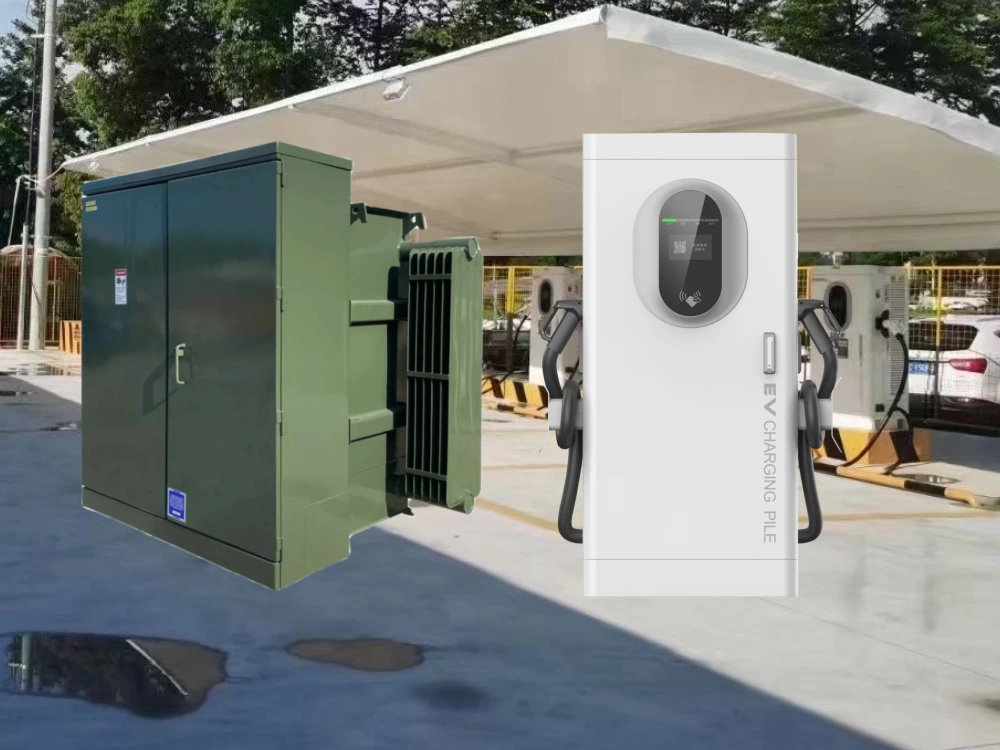As electric vehicles (EVs) become more popular, the need for effective and reliable charging infrastructure has surged. A key component in this infrastructure is the transformer, specifically the 75 kVA transformer, which plays a crucial role in powering various types of EV chargers. This article explores the applications of a 75 kVA transformer for both commercial EV charging stations and home charging solutions, highlighting the connection to charging equipment and power requirements.
Role of a 75 kVA Transformer in EV Charging Stations
Medium-Sized Commercial Charging Stations
- Function: The 75 kVA transformer is well-suited for medium-sized EV charging stations. It can efficiently handle the power requirements of several Level 2 chargers or a mix of Level 2 and Level 3 (fast) chargers.
- Charging Equipment:
- Level 2 Chargers: Typically deliver 3.7 kW to 22 kW per unit. A 75 kVA transformer can support multiple Level 2 chargers, making it ideal for commercial setups with moderate charging needs.
- Level 3 Chargers: These high-power chargers can deliver 20 kW or more. The 75 kVA transformer can support a few Level 3 chargers, depending on the total power consumption.
- Applications: Commonly used in parking lots, retail centers, and public charging stations where several chargers are needed but the demand is not exceptionally high.
Power Requirements
- Capacity: The 75 kVA transformer provides up to 75 kVA of power, which is sufficient for managing the power needs of a combination of Level 2 and Level 3 chargers at a medium-sized station.
- Installation: Proper installation is crucial to ensure that the transformer can handle the expected load efficiently and safely.
Role of a 75 kVA Transformer in Home Charging Solutions
Home EV Charging
- Function: For households with high charging demands, such as those using fast chargers or multiple charging points, a 75 kVA transformer might be necessary to ensure adequate power supply.
- Charging Equipment:
- Level 2 Home Chargers: Often range from 7.2 kW to 11 kW per unit. A 75 kVA transformer can support multiple Level 2 home chargers if installed.
- High-Power Chargers: For homes with significant charging needs or fast charging setups, a 75 kVA transformer can provide the necessary power.
- Applications: Suitable for large households or those with high electrical consumption, where multiple EVs are charged simultaneously or high-power charging is used.
Considerations
- Existing Electrical System: Evaluate your current system to determine if a 75 kVA transformer is needed. Homes with substantial electrical demands may benefit from this transformer.
- Professional Installation: Engage a licensed electrician to ensure proper installation and integration with your home’s electrical system, especially for high-power charging setups.
Key Points for Selection and Installation
Assessment of Power Needs
- Charging Stations: Determine the total power requirement based on the number and type of chargers to ensure a 75 kVA transformer is appropriate.
- Home Charging: Assess your household’s power consumption and charging requirements to decide if a 75 kVA transformer is necessary.
Professional Guidance
- Installation: Proper installation by a professional is essential to ensure the transformer operates effectively and safely.
- Maintenance: Regular maintenance and inspection of the transformer and charging equipment are crucial for reliable operation and safety.
Conclusion
The 75 kVA transformer is an effective solution for both commercial EV charging stations and home charging setups. It provides the necessary power for a range of charging equipment, including Level 2 and high-power Level 3 chargers. Whether for a medium-sized commercial installation or a high-demand residential environment, a 75 kVA transformer ensures efficient and reliable power delivery.
By incorporating a 75 kVA transformer into your EV charging infrastructure, you can support a variety of charging needs and enhance the overall efficiency of your charging solutions. Understanding the transformer’s role and ensuring proper installation will contribute to a seamless and effective EV charging experience.


